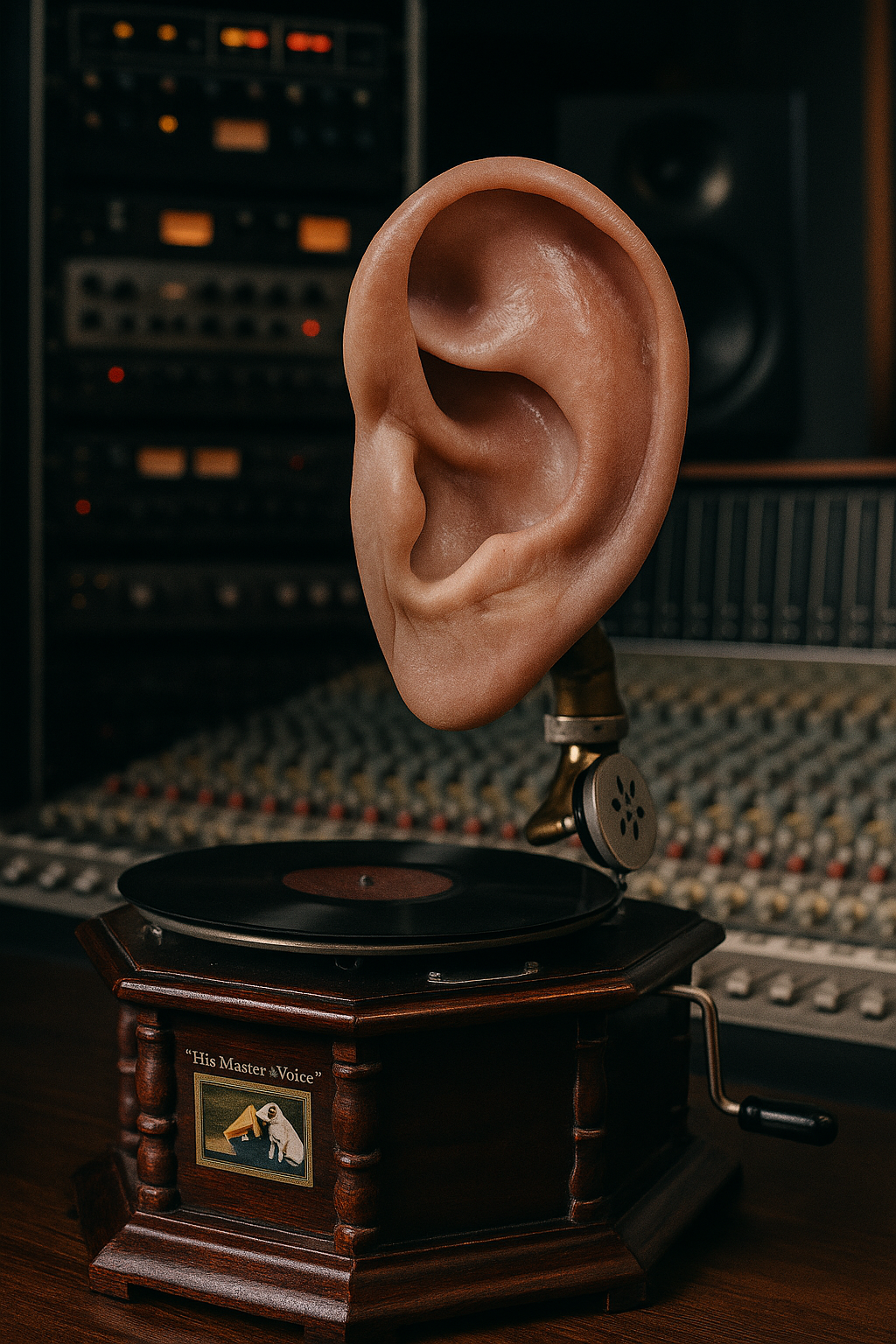What is the most important "Plugin" in audio production?

YOUR EAR!
The Human Ear & Hearing in Audio Production
In audio production, the human ear is more than just a sensory organ – it is the final judge,the main reference point, and the most accurate analyzer. The ability to listen intentionally defines the quality and impact of any musical work.
Anatomy of Hearing
The ear consists of the outer, middle, and inner ear. In the inner ear,
the cochlea converts sound waves into electrical signals, which are interpreted by the brain – the true "hearing" happens here. Psychoacoustics, the science of how we perceive sound, plays a critical role in mixing and mastering.
Types of Hearing in Audio Work
- Analytical Listening – Detecting frequencies, phase issues, transients, masking. Essential for mix decisions.
- Critical Listening – Noticing small tonal or dynamic differences, like the impact of subtle EQ or compression.
- Musical Listening – Recognizing pitch, harmony, timing, and groove.
- Emotional Listening – Asking: Does this mix feel right? Does it connect emotionally?
- Adaptive Listening – Checking mixes on headphones, speakers, car systems, etc., to ensure consistency.
Why Good Hearing Is Crucial
Modern tools offer visual cues – spectrum analyzers, meters, dynamic displays – but they can’t replace what trained ears detect: depth, warmth, space, balance, or analog glue.
Ear Training Is Vital
Just like a muscle, hearing must be trained. Focused listening builds awareness of frequency balance, dynamics, and tonal character – and distinguishes a skilled engineer from an average one.
Conclusion
You can have the best gear and most precise tools, but if your ears aren’t trained to listen deeply, you're missing the point. Great sound begins and ends with the art of hearing.
FAQ
Q: What is the most important "plugin" in audio production?
A: Your ears – they are the ultimate reference and decision-maker.
Q: Why can’t visual tools replace hearing?
A: Tools show data, but only trained ears perceive depth, warmth, and emotional impact.
Q: How can I improve my listening skills?
A: Through ear training, critical listening exercises, and comparing mixes across systems.
Q: What types of listening are essential in audio production?
A: Analytical, critical, musical, emotional, and adaptive listening.
Q: Why is ear training vital for engineers?
A: It sharpens frequency awareness, dynamic perception, and tonal balance – the foundation of great sound.
About the Co-Author
CB MASTERING – partner in crime at NexaTunes Blog
📧 cbmastering@gmx.de · 🔗 linktr.ee/cb.mastering
